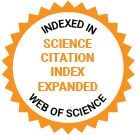Journal of Medical Internet Research
The leading peer-reviewed journal for digital medicine and health and health care in the internet age.
Editor-in-Chief:
Gunther Eysenbach, MD, MPH, FACMI, Founding Editor and Publisher; Adjunct Professor, School of Health Information Science, University of Victoria, Canada
Impact Factor 5.8 CiteScore 14.4
Recent Articles

Concerned significant others (CSOs) play a significant role in supporting individuals with substance use disorders. There is a lack of tailored support services for these CSOs, despite their substantial contributions to the well-being of their loved ones (LOs). The emergence of helplines as a potential avenue for CSO support is outlined, culminating in the focus on the Partnership to End Addiction’s helpline service, an innovative public health intervention aimed at aiding CSOs concerned about an LO’s substance use.

Prevention of drug-induced QT prolongation (diLQTS) has been the focus of many system-wide clinical decision support (CDS) tools, which can be directly embedded within the framework of the electronic health record system and triggered to alert in high-risk patients when a known QT-prolonging medication is ordered. Justification for these CDS systems typically lies in the ability to accurately predict which patients are at high risk; however, it is not always evident that identification of risk alone is sufficient for appropriate CDS implementation.

Digital health has become integral to public health care, advancing how services are accessed, delivered, and managed. Health organizations increasingly assess their digital health maturity to leverage these innovations fully. However, existing digital health maturity models (DHMMs) primarily focus on technology and infrastructure, often neglecting critical communication components.

Crisis hotlines serve as a crucial avenue for the early identification of suicide risk, which is of paramount importance for suicide prevention and intervention. However, assessing the risk of callers in the crisis hotline context is constrained by factors such as lack of nonverbal communication cues, anonymity, time limits, and single-occasion intervention. Therefore, it is necessary to develop approaches, including acoustic features, for identifying the suicide risk among hotline callers early and quickly. Given the complicated features of sound, adopting artificial intelligence models to analyze callers’ acoustic features is promising.

Certain populations are underrepresented in clinical trials, limiting the generalizability of new treatments and their efficacy and uptake in these populations. It is essential to identify and understand effective strategies for enrolling young adults in clinical trials, as they represent a vital and key demographic for future clinical trial participation.


Depression affects more than 350 million people globally. Traditional diagnostic methods have limitations. Analyzing textual data from social media provides new insights into predicting depression using machine learning. However, there is a lack of comprehensive reviews in this area, which necessitates further research.


Type 1 diabetes mellitus (T1DM) significantly affects patients’ quality of life and can be life-threatening, necessitating improved monitoring strategies. Telemedicine, which leverages telecommunications technologies to deliver health care services and expertise, has the potential to enhance T1DM management. However, its effectiveness remains to be fully established.

Ocular myasthenia gravis (OMG) is a neuromuscular disorder primarily affecting the extraocular muscles, leading to ptosis and diplopia. Effective patient education is crucial for disease management; however, in China, limited health care resources often restrict patients’ access to personalized medical guidance. Large language models (LLMs) have emerged as potential tools to bridge this gap by providing instant, AI-driven health information. However, their accuracy and readability in educating patients with OMG remain uncertain.

Diabetes mellitus significantly increases the risk of severe complications from influenza, necessitating targeted vaccination efforts. Despite vaccination being the most effective preventive measure, coverage remains below the World Health Organization’s targets, partly due to limited awareness among patients. This study evaluated a digital health intervention aimed at improving influenza vaccination rates among adults with diabetes.

In the context of mass casualty incident (MCI) management, artificial intelligence (AI) represents a promising future, offering potential improvements in processes such as triage, decision support, and resource optimization. However, the effectiveness of AI is heavily reliant on the availability of quality data. Currently, MCI data are scarce and difficult to obtain, as critical information regarding patient demographics, vital signs, and treatment responses is often missing or incomplete, particularly in the prehospital setting. Although the NIGHTINGALE (Novel Integrated Toolkit for Enhanced Pre-Hospital Life Support and Triage in Challenging and Large Emergencies) project is actively addressing these challenges by developing a comprehensive toolkit designed to support first responders and enhance data collection during MCIs, significant work remains to ensure the tools are fully operational and can effectively integrate continuous monitoring and data management. To further advance these efforts, we provide a series of recommendation, advocating for increased European Union funding to facilitate the generation of diverse and high-quality datasets essential for training AI models, including the application of transfer learning and the development of tools supporting data collection during MCIs, while fostering continuous collaboration between end users and technical developers. By securing these resources, we can enhance the efficiency and adaptability of AI applications in emergency care, bridging the current data gaps and ultimately improving outcomes during critical situations.
Preprints Open for Peer-Review
Open Peer Review Period:
-
Open Peer Review Period:
-
















